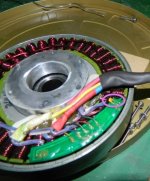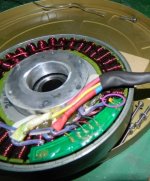Not so fast. A hard and set answer is of course impossible because there's all these different resins, how high do you suppose the melting temperature is for resin on an F18 or Dreamliner? Depending on what they might have used as a filler, this goes up. Keep in mind that even worse than the epoxy itself is what they might have used as a filler. These could have some nasty fumes.
There is a Glass Transition Temperature, Tg that is affected by the cure temperature of the original resin. First of all it's about 135c, give or take something for the filler. The higher the temperature of the cure, the higher the Tg We might assume electronics is cured at 25c, but we're back to talking about Chinese quality control at that point. (For all we know the individual company might not be using epoxy at all, it could be vinyl ester, polyester, GLYPTAL, etc. Is it red?) Get it hot enough and it loses it's tack/stickiness. It can still be fairly solid but will peel/pry up as something close to a block. Or a piece of it might break off. (A lot of low temp epoxy unsticks in boiling water, supposedly electronics aren't hurt by that BUT. . . .) Some electronics epoxy is modestly pliable to begin with, it's the fact it's sticking to the board that keeps you from knowing. I THINK Glyptal will have the Tg around 70c , that's from memory when I couldn't find it online, and you get wonderful fumes to worry about. I suspect worse than the polyester would give you.
But again depending, epoxy can resume curing. I don't really expect you to get it that hot, but just don't go nuts with it. They do in fact recycle carbon fiber by melting the epoxy off. Must be quite a process though.
Oh, one other thing, but what's the danger to the electronics if you spray freeze? The epoxy has a way of becoming brittle and coming loose, BUT. . . .



